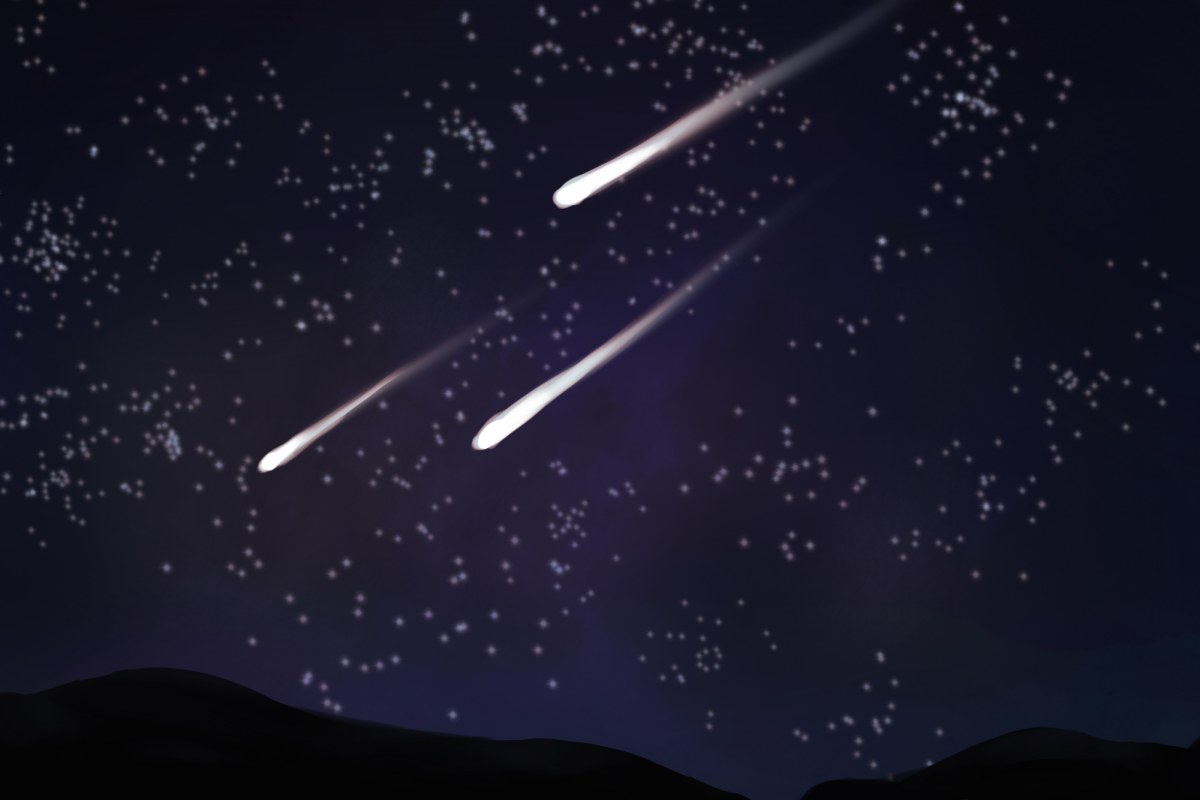It’s that time of year again! As November rolls around, meteors shoot across the night sky in the annual Taurid meteor shower. This meteor shower is first visible in September with the Southern Taurids, then ends with the Northern Taurids, which last until December.
Meteor showers are a celestial event in which Earth passes through a high concentration of interplanetary debris. In the case of the Taurid meteors, the Earth encounters the dust particles left behind by Comet Encke, which is speculated to have broken up anywhere from 10,000 to 30,000 years ago. The name of the meteor showers stem from the origin point of the comets themselves. The Northern and Southern Taurids emerge from the constellation Taurus, hence the name Taurid meteor shower.
The Taurid meteor showers are particularly notorious for their “fireballs,” a term that encapsulates the especially bright appearance of certain meteors. A fireball is defined as a meteor that reaches a visual magnitude. Magnitude is a scale usually used to measure the brightness of a star, where the lower the number, the brighter the apparent light. The Taurus showers can achieve a magnitude of three when stationed directly above the observer, about the same apparent magnitude as a distant star like Polaris. The light is caused by debris entering Earth’s atmosphere at extremely high trajectories, causing the meteors to heat up intensely. This friction creates glowing hot air as the meteors soar across the night sky, becoming what we know as a “shooting star.”
Other distinct features of the Taurid meteor showers are their relatively long duration. This, coupled with the slow-moving, sparse nature of the comets, makes them easier to observe but rarer to find. The Taurid meteor shower’s months-long season is a product of Comet Encke’s widely spread stream. Even at peak activity, only about five shower members appear per hour. They move at a speed of 17 miles per second or 65,000 miles per hour—which is relatively slow, especially when compared to the Leonid meteor shower, whose fastest meteors travel at 44 miles per second or 150,000 miles per hour.
Unfortunately, the Taurids’ peak has already passed. The Southern Taurids’ reached their highest activity in early October, while the Northern Taurids set skies ablaze on November 12. A meteor shower’s peak includes the time of highest meteor activity, which correlates to when the Earth reaches the densest part of the comet debris.
Despite missing the peak of the Taurid meteor showers, they are still observable until early December. So if you are interested in seeing them for yourself, there is still time! The meteors are visible across the entire world, except the South Pole. To observe them, the conditions must be right; the size of the moon and weather conditions directly affect the meteors’ visibility. A clear sky without clouds and new moons in a place without light pollution is ideal. The best time to spot a meteor shower is after midnight, so it is in your best interest to bring blankets or a tent to stay warm and comfortable. Enjoy the Taurid meteor shower season, and good luck spotting the shooting stars!








































































Jm • Nov 26, 2024 at 10:46 pm
BANGER ALERT!! I wish i can see them soon and where I live :((
Thanks for the article!!! keep writing!!!
kudos!!!!